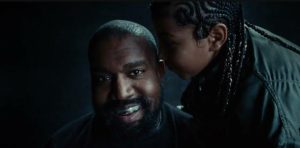Black Male Students Discuss Impact Of Hypermasculinity
October 6, 2018
Power became synonymous with masculinity somewhere over the years. The more “macho” a man is perceived to be, the more power he yields over his peers.
Contrary to popular belief, the patriarchy marginalizes men as well. It has full control over what is deemed “maleness” and what qualities a “real man” is allowed to possess.
As a society, male emotions are often trivialized. The acceptable range of male expression is mostly limited to those traits that reinforce the idea of machismo, and what it means to be male. These respected assets include strength, bravery, confidence and anger.
Young men are raised to believe that it is a man’s duty to protect and provide for others. Although society is becoming more progressive, their first images of what it looks like to be male are often those in dominating or defensive positions. Images of athletes, superheroes, policemen, firemen, military leaders and presidents are drilled into their subconscious. Consequently, men are universally overwhelmed by the pressures of perpetuating this never-wavering image of strength and heroism. They fear of being considered weak or viewed as feminine by fellow members of our male-dominated society.
Hypermasculinity is a physiological term that describes the exaggeration of negative stereotypical male behaviors, such as aggression, misogyny and excessive drug or alcohol use, as a way to mask emotion.
“My father had a lot of mental health issues and I feel like he hurt a lot of women physically and mentally. Our family never really accepted it and would just tell him to go to church and pray it out,” Central Connecticut sophomore Jordan Jackson counted during a Black Student Union meeting.
While there is no doubt this notion of hypermasculinity plague men of all kind, the black community, arguably the most marginalized group in America, suffer.
The black man is the most feared man in America.
According to The Washington Post, “blacks make up about 13 percent of the population, but 23 percent of [them were] fatally shot by police since 2015. For shootings of unarmed people, blacks were 36 percent of those killed.”
While men of all races have limited representation of masculinity, young black men have it especially hard.
In the media, black men are most commonly portrayed as drug-abusing violent criminals others should fear, or charming, womanizing athletes and rappers others should idolize. Black men are either fetishized or demonized, and there are exceptions, but it is rare.
There is a code of silence around the black man’s emotional depth. The black community is often guilty of ignoring signs of mental health issues, and telling young men to be tough and don’t cry, never teaching responsible reactions to the traumas they endure as young black men.
“A lot of black men don’t know how to express any emotion but anger, and we really need to work on that [as a community],” CCSU senior Herbert Perryman said.
The strains of hypermasculinity affect the entire family dynamic. Toxic behaviors are passed down generationally. The traits are either learned directly by an abusive prominent male figure or adapted at ages as young as eight, as a way to become the prominent male figure absent from the family structure.
Moving forward, society as a whole will need to acknowledge hypermasculinity and its detrimental effects on the male sex, and consequential effects on the female sex. Civilization needs to reexamine the social construct that is gender and what it means to be masculine and feminine. We need to eliminate the stigma that comes with both.





